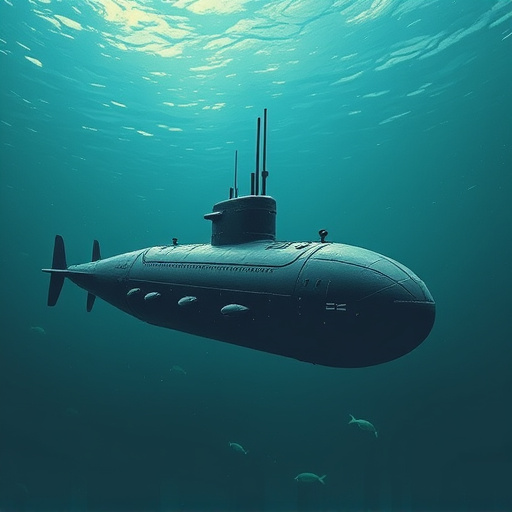Submarines have evolved from quaint, hand-cranked vessels to formidable, advanced military assets. In modern naval warfare, these stealthy underwater cruisers play a pivotal role, offering unparalleled stealth and maneuverability. This article delves into the evolution of submarine technology, exploring how they’ve transformed from solitary voyages to versatile platforms capable of surveillance and attack. We’ll also dissect challenges, from technical limitations in deep waters to emerging innovations shaping their future, solidifying their position as an indispensable component of naval power.
Evolution of Submarine Technology: Past and Present
Submarine technology has evolved significantly since its early beginnings, transforming from wooden vessels to advanced, stealthy machines capable of operating at extreme depths for extended periods. Historically, submarines were primarily designed for exploration and military surveillance, but they’ve since become integral elements in naval warfare strategies.
Modern submarine technology incorporates sophisticated sensors, powerful propulsion systems, and advanced weaponry. These improvements enable submarines to engage in diverse missions, including anti-ship warfare, mine detection and clearance, special forces deployment, and intelligence gathering. Today’s submarines are quieter, faster, and more maneuverable than ever before, making them highly effective assets for modern navies worldwide.
Stealth and Maneuverability: Submarines as Unseen Force
Stealth and maneuverability make submarines an unseen force in modern naval warfare. These vessels can operate unnoticed beneath the waves, allowing them to approach enemy ships or submarines undetected. With advanced propulsion systems and silent running capabilities, submarines can quickly change direction and depth, making them highly evasive. This unique combination of stealth and agility gives submarines a significant advantage in both offensive and defensive operations.
Unlike surface ships that rely on their size and firepower, submarines utilize the element of surprise to engage adversaries. They can launch precision strikes with torpedoes or cruise missiles, then disappear before any countermeasures can be taken. This tactical superiority makes submarines invaluable assets for naval forces worldwide, contributing significantly to maritime security and global strategic balance.
Versatility in Naval Operations: From Surveillance to Attack
Submarines are versatile assets in modern naval warfare, capable of performing a wide range of missions. They offer unique capabilities for intelligence gathering and surveillance, allowing them to monitor enemy movements and activities discreetly beneath the waves. Armed with advanced sensors and weaponry, submarines can also conduct offensive operations, launching precision strikes against targeted vessels or coastal infrastructure.
Their stealth and maneuverability make them highly effective in denying enemies crucial information while providing strategic advantages to their own forces. Whether it’s tracking hostile submarines, protecting shipping lanes, or delivering devastating blows, the versatility of submarines ensures they remain an indispensable element of naval power in today’s complex geopolitical landscape.
Challenges and Limitations: Deep Waters, Technical Hurdles
Despite their immense capabilities, submarines face significant challenges and limitations in modern naval warfare. One of the primary hurdles is navigating deep waters—submarines are designed for underwater operations but must contend with ocean depths that can exceed several thousand meters. Beyond technological constraints, such extreme depths pose risks to the submarine’s structural integrity and operational safety.
Additionally, technical hurdles further complicate matters. Submarines rely on sophisticated systems for propulsion, communication, and sensing. However, these systems are susceptible to failure under intense pressure and in environments with limited visibility. Moreover, the need for silent operation to evade detection creates a constant tension between power requirements and noise reduction, necessitating continuous technological advancements to overcome these challenges.
Future of Submarines: Innovation for Enhanced Capabilities
The future of submarines is being shaped by innovative technologies designed to enhance their capabilities in modern naval warfare. Advancements such as improved propulsion systems, stealth technology, and artificial intelligence are revolutionizing submarine operations. These innovations not only increase speed and maneuverability but also enable subtler and more effective missions.
For instance, electric drive systems offer greater efficiency and reduced noise, making submarines harder to detect. Enhanced sensors and data analytics allow for better target acquisition and situational awareness, while AI-powered systems can improve decision-making processes. These innovations are set to transform submarines into even more formidable assets, capable of conducting complex operations in increasingly challenging environments.
